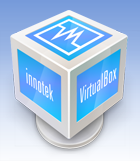 Previously in the post, Fix Firefox Crash with Yahoo Mail, I covered a very simple way to eliminate a very frequently occurring crash problem due to a conflict between ad blocking addons and a module installed by Yahoo! Instant Messenger.
Previously in the post, Fix Firefox Crash with Yahoo Mail, I covered a very simple way to eliminate a very frequently occurring crash problem due to a conflict between ad blocking addons and a module installed by Yahoo! Instant Messenger.
That fix significantly reduced the crashes that I encountered. However, I was still getting occasional crashes under the same circumstances with Yahoo! Mail. But, I’ve tracked that down and, so far, seem to have alleviated all the crashes.
I’ve been using two different ad blocking addons for Firefox, AdBlock and AdBlock Plus, though not on the same operating system. On the computer that was still having a crashing problem, which was running Windows XP, I had AdBlock installed. Switching to AdBlock Plus made the difference.
So, should you just switch to AdBlock Plus and not use the previous fix? Not so fast. The previous fix works even if you don’t use any ad blocking add-on. So, start with it first.
Have other helpful fixes for Firefox or improvements to this fix? Post it in the comments.

 Last month, I posted about the
Last month, I posted about the